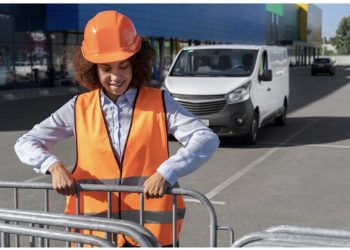Laser Engraving Speed Explained: How Speed and Power Affect Engraving Results When it comes to achieving perfect laser engravings—whether on wood, acrylic, glass, or metal—two settings matter most: speed and power. These two parameters determine how deep, dark, and detailed your engraving will be. Understanding the right laser engraving speed is crucial if you want clean, sharp, and professional results without burning or under-engraving your material. In this guide, we’ll break down everything you need to know about laser engraving speed and power, explain how to optimize your machine’s performance, and explore how OneLaser’s X Series (XRF and XT models) and Hydra Series (7, 9, 13, 16) make high-speed engraving easier than ever.
What Is Laser Engraving Speed? Laser engraving speed refers to how quickly the laser head moves across the material’s surface during engraving. It’s usually measured in millimeters per second (mm/s) or inches per second (IPS). In simple terms: Faster speed = lighter engravings (shallower depth, less burn).
Slower speed = deeper engravings (more burn or darker marks).
Finding the right speed isn’t just about how fast you finish the job—it’s about balancing detail, contrast, and depth for the best possible results.
The Relationship Between Laser Engraving Speed and Power Speed and power work together. You can’t adjust one without affecting the other. Power determines how much energy the laser delivers.
Speed determines how long the laser stays in contact with the surface.
For example: High power + low speed = deep engraving or potential burn marks.
Low power + high speed = light marking or incomplete engraving.
That’s why mastering laser engraving speed and power settings is essential for consistent, professional-quality work.
Why Engraving Speed Matters Material Quality: Different materials absorb heat differently. Wood burns faster than acrylic, while glass requires low power and slower speed.
Production Efficiency: Higher speeds reduce production time, especially for large orders.
Design Accuracy: Detailed designs require slower speeds for precision, while simple logos can be engraved faster.
Machine Longevity: Optimized settings prevent unnecessary wear on your laser tube and mirrors.
By fine-tuning speed, you can achieve better contrast, cleaner edges, and consistent engraving quality across materials.
How to Determine the Right Laser Engraving Speed Finding the ideal engraving speed on laser depends on several factors: 1. Material Type Each material reacts differently to laser energy. Here’s a general guideline: Material Suggested Speed (mm/s) Power (%) Notes Wood 200–400 40–60 Softer woods can go faster; hardwoods need slower speeds. Acrylic 250–350 30–50 High speed prevents melting. Leather 200–300 20–40 Too slow can scorch the surface. Glass 150–200 10–20 Use low power and slow speed for frosted effect. Stainless Steel (with spray) 100–200 60–90 Requires marking spray for visibility.
2. Laser Power and Type Machines with higher wattage can engrave faster without losing depth or quality. For example: OneLaser XRF (38W RF Metal Tube) – best for fine detail at medium speeds.
OneLaser XT (55W CO₂ Glass Tube) – better for slightly deeper, slower engraving or cutting.
OneLaser Hydra Series (80W–150W CO₂ + 38W/75W RF) – industrial-grade, capable of high-speed laser engraving with deep precision.
3. Engraving Resolution (DPI) Higher DPI (dots per inch) means more laser passes per inch, increasing detail but requiring slower speeds. 300 DPI: Good for quick, low-detail jobs.
500–600 DPI: Standard for text and graphics.
800–1000 DPI: Best for photo engravings or ultra-detailed logos.
4. Design Complexity Intricate artwork with tight curves, shading, or small fonts requires slower speeds to maintain clarity. 5. Focusing and Lens Quality If your laser is properly focused and your lens is clean, you can run higher speeds without sacrificing quality.
Common Laser Engraving Speed Settings (Quick Reference) Material Engraving Speed Power Notes Birch Plywood 300 mm/s 45% Balanced for dark contrast. Acrylic (Clear) 350 mm/s 30% Avoid melting with higher speed. Leather 250 mm/s 25% Keep surface clean for smooth burn. Glass 180 mm/s 15% Use wet paper or dish soap coating. Stainless Steel 120 mm/s 80% Use marking spray or powder. Anodized Aluminum 400 mm/s 20% Fast and precise; produces crisp white marks.
Note: Always test on a sample before final production. Material brands, coatings, and color can affect results.
How High-Speed Laser Engraving Machines Improve Workflow Speed is productivity. A high speed laser engraving machine allows you to produce more pieces per hour while maintaining exceptional quality. Benefits of a High-Speed System: Increased Output: More items completed in less time.
Reduced Burn Marks: Shorter exposure means cleaner surfaces.
Smoother Lines: Advanced motion control ensures stability.
Consistent Depth: Perfect for batch engraving.
Machines like the OneLaser Hydra Series are built for industrial-scale speed and precision, thanks to their advanced motion control systems and hybrid laser technology.
OneLaser X Series – Compact Precision with Versatile Speed Control The OneLaser X Series is the ideal choice for small businesses, designers, and creators who want professional-grade results without needing a large machine. 🔹 XRF Model – Precision with RF Metal Tube Power: 38W RF Metal Tube.
Best For: Engraving coated metal cups, leather patches, acrylic, and glass.
Speed Capability: Up to 800 mm/s for engraving; optimal for high detail.
Work Area: 600 × 300 mm.
Key Feature: Sharp line engraving and consistent shading, even at high speeds.
🔹 XT Model – CO₂ Glass Tube with Cutting Power Power: 55W CO₂ Glass Tube.
Best For: Engraving and cutting wood, acrylic, and leather.
Speed Capability: Up to 600 mm/s.
Optional Add-On: Base Booster, which increases vertical clearance for large objects like tumblers and tall décor items.
Both X Series models come with LightBurn compatibility, allowing you to fine-tune laser engraving speed and power settings easily through an intuitive interface.
OneLaser Hydra Series – Industrial Speed Meets Hybrid Power When speed and productivity matter most, the OneLaser Hydra Series delivers. These machines are designed for high-volume engraving and cutting with maximum efficiency. 🔹 Key Features: Dual-Laser Hybrid System: CO₂ glass tube (80W–150W) for cutting and RF metal tube (38W/75W) for precision engraving.
Work Area: From 700 × 500 mm to 1600 × 1000 mm.
Engraving Speed: Up to 1000 mm/s with advanced motion control.
Positioning Accuracy: ≤0.008 mm for flawless precision.
Cooling System: Industrial-grade chiller for stable, 24/7 operation.
Software: LightBurn, RDWorks, and AutoCAD compatible.
🔹 Models Overview: Model CO₂ Power RF Power Work Area Best For Hydra 7 80W 38W 700 × 500 mm Entry-level industrial use Hydra 9 100W 38W 900 × 600 mm High-speed engraving & small batch production Hydra 13 130W 38W 1300 × 900 mm Bulk signage & engraving at scale Hydra 16 150W 75W 1600 × 1000 mm Large-format engraving & industrial manufacturing
Each Hydra model is a high speed laser engraving machine built for power users who need unmatched consistency and output capacity. Learn more: OneLaser Hydra 7 Review from Customer’s Experience
How Speed Affects Different Laser Applications 1. Engraving vs. Cutting Engraving: Requires higher speeds (200–1000 mm/s).
Cutting: Uses slower speeds (5–30 mm/s) for deeper penetration.
2. Photo Engraving When engraving photos, slower speeds (150–300 mm/s) paired with low power create better grayscale shading. 3. Vector Engraving For logos or line art, use medium to high speeds (400–700 mm/s) with moderate power. Learn more: Raster Engraving vs. Vector Engraving: What Are the Differences? 4. Bulk Production For repetitive products like coasters, patches, or signage, higher speeds (700–1000 mm/s) can maintain throughput without sacrificing quality.
Tips for Mastering Laser Engraving Speed and Power Start with Test Grids: Run small test patterns at various speeds and power levels to find optimal settings. Adjust Based on Material Thickness: Thicker materials need slower speeds. Clean Your Optics Regularly: Dust or residue can scatter the beam, reducing effective speed. Use Proper Focusing: Poor focus leads to inconsistent engraving depth. Balance DPI with Speed: Higher DPI requires slower speeds to maintain detail. Avoid Overpowering: More power isn’t always better—too much can char or crack materials. Record Your Settings: Keep a log of your best settings for repeat projects.
Why OneLaser Machines Excel in Speed and Precision Both the OneLaser X Series and Hydra Series are engineered for balance—combining cutting-edge motion control with optimized laser tuning. X Series: Perfect for precision engraving, small businesses, and hobbyists who value accuracy and compact design. Hydra Series: Built for industrial environments where speed, consistency, and hybrid performance matter most. Each machine delivers: Smooth, Vibration-Free Motion for accurate engraving lines. Adjustable Speed Control via software for precise calibration. Efficient Cooling & Safety Systems to maintain consistent output. Rotary Attachments Compatibility for engraving cups, tumblers, and cylindrical objects. With OneLaser, you’re not just getting faster engraving—you’re getting smarter speed control designed for long-term reliability and outstanding results.
Conclusion Understanding laser engraving speed is key to mastering your craft. The right balance of speed and power ensures clean lines, consistent depth, and professional-quality engravings—every time. For creators, crafters, and professionals, OneLaser machines provide the ideal combination of precision, speed, and reliability: The OneLaser X Series (XRF and XT with Base Booster) delivers compact, high-speed engraving for small workshops and businesses. The OneLaser Hydra Series (7, 9, 13, 16) offers industrial-grade performance, hybrid laser technology, and exceptional speed for high-volume production. Whether you’re engraving wood signs, leather patches, or stainless-steel tumblers, mastering your laser engraving speed and power settings—and choosing the right machine—will help you achieve stunning, repeatable results with every project.








